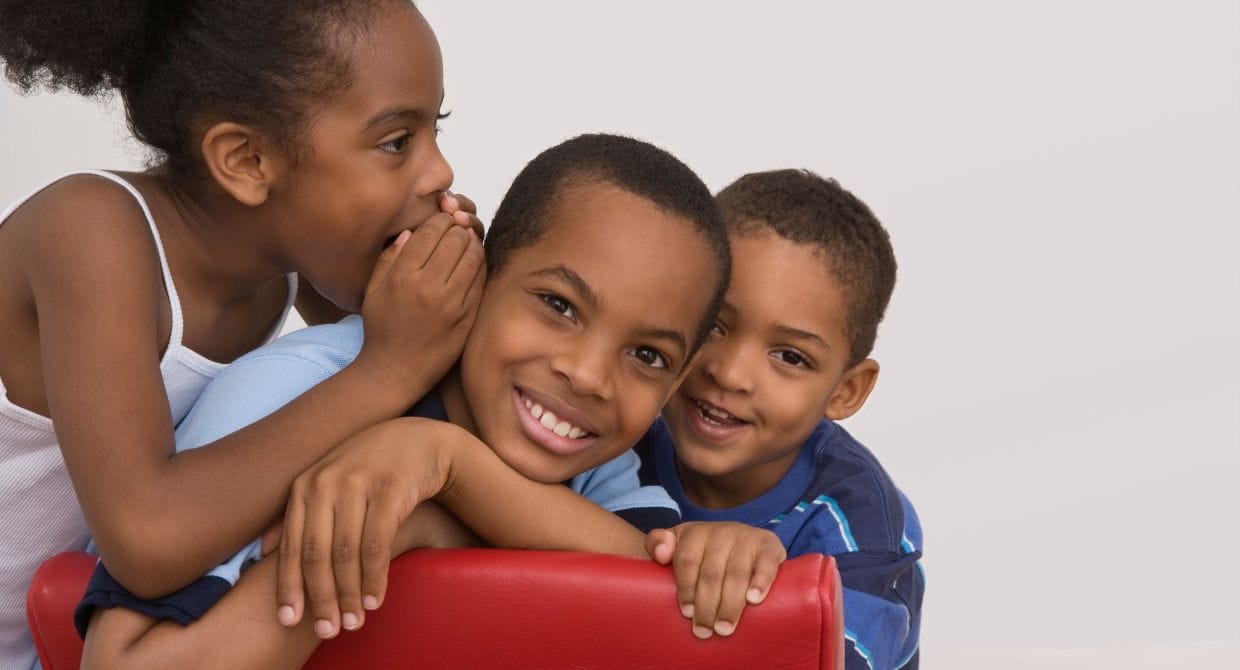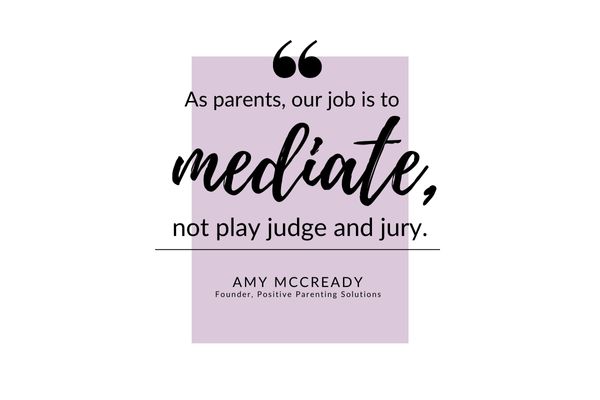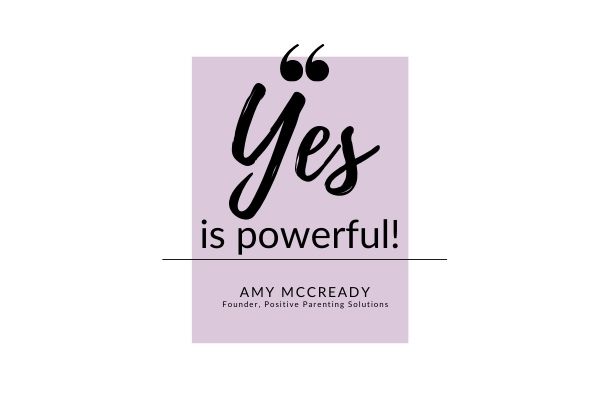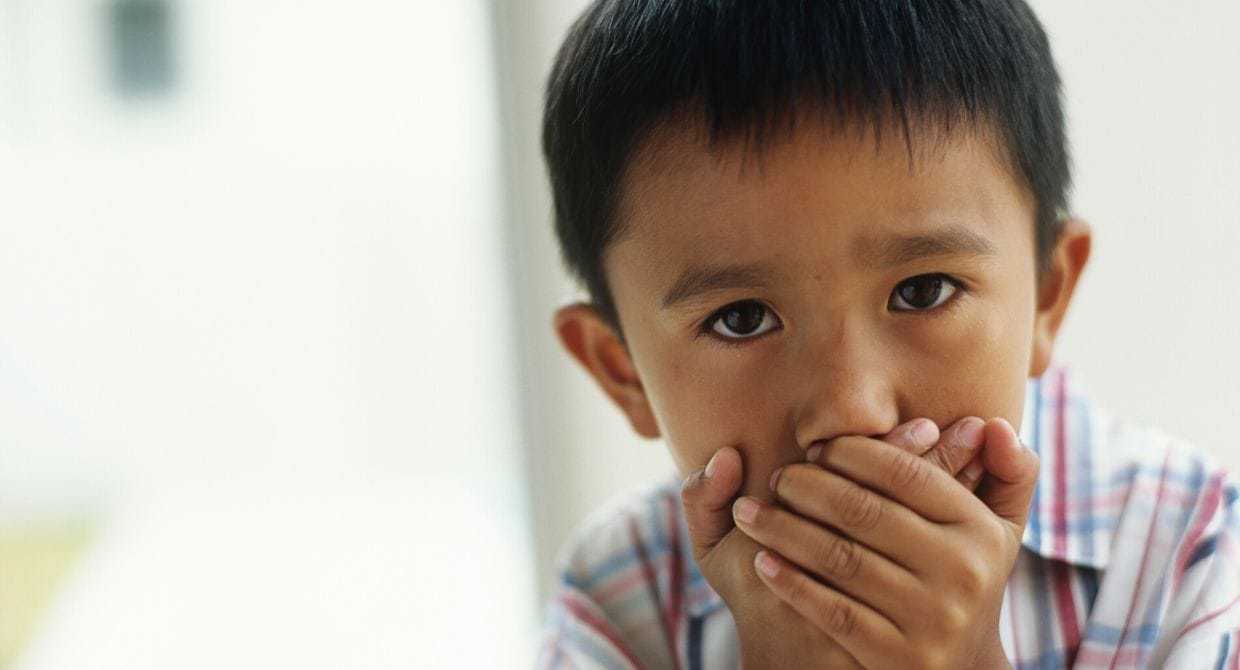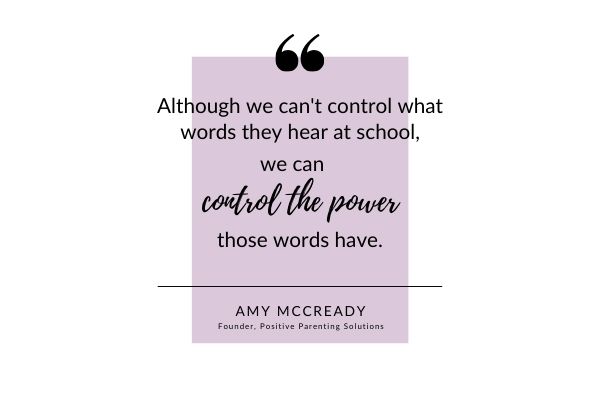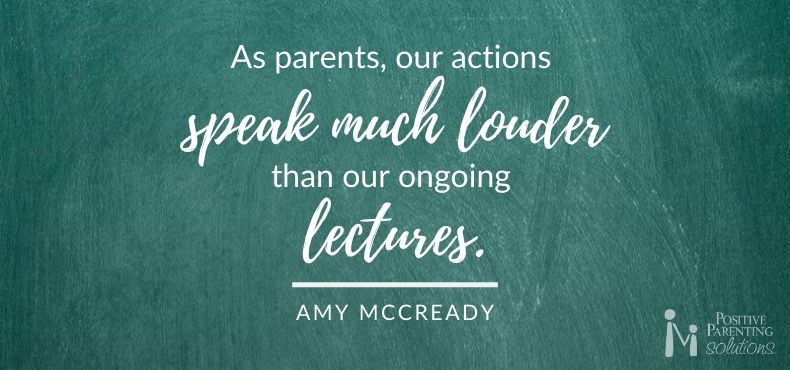

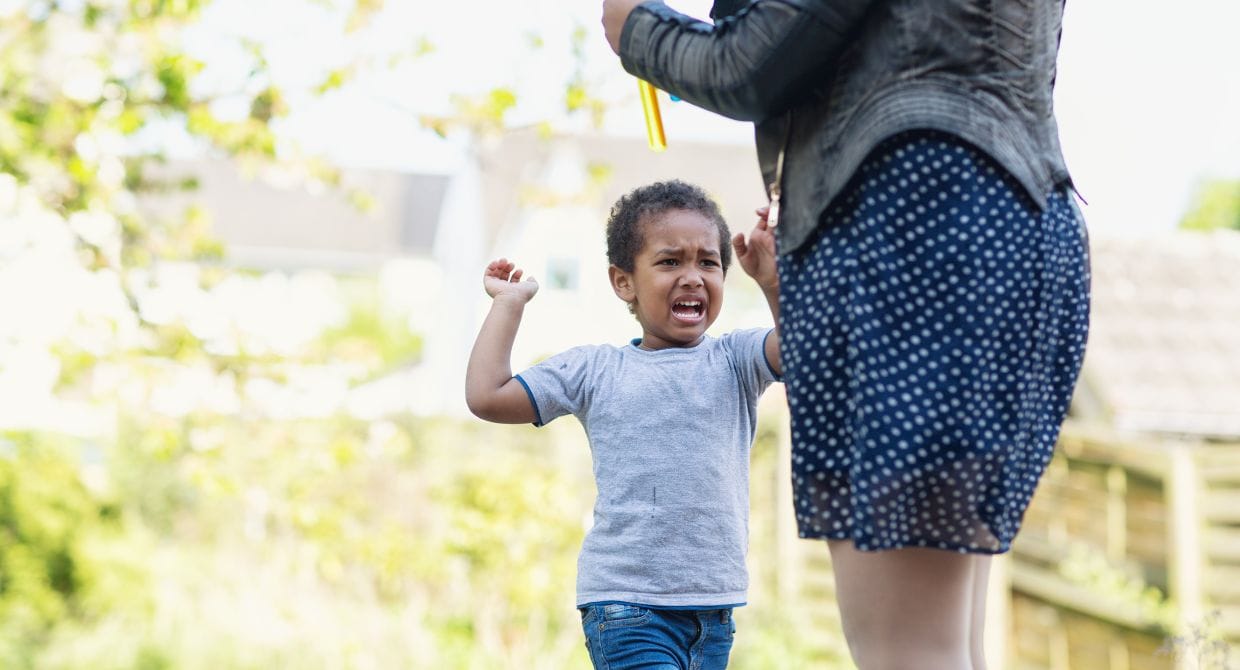
It happens in an instant.
One moment, you’re joyfully watching your toddler play with his big brother, giggling as they roughhouse across the floor; the next, your ears are flooded with your oldest’s screams.
Ouch! He bit me!!!
You want to believe this was a one-time-only incident. That he just got caught up in the moment of play. But in all honesty, this isn’t an isolated incident.
Your toddler has bitten before. He’s also thrown a few fists from time to time. And you’re afraid he’ll do it again if you don’t do something about it now.
Parents are understandably concerned when their sweet little one becomes aggressive with other children (or Mom and Dad). They wonder, Is this normal? Or, Where on earth did he pick that up from?
Throw in the added guilt of knowing their child inflicted pain on another person, and other worries start to pop up.
Is my child habitually aggressive? Will this stop him from making friends? Will he be a bully one day?
Though it’s a situation no parent wants to go through, it is a common one nonetheless.
I can’t tell you how many exasperated and desperate parents have reached out after taking my FREE PARENTING WEBINAR or enrolling in the 7-Step Parenting Success System® course with this same concern.
Thankfully, toddler biting and hitting is rarely something to be seriously concerned about. Still, they are reactions that should be nipped before they turn into a pattern of behavior that’s much more challenging to correct.
For toddlers–or kids under three–biting and hitting are more of a training issue than a “misbehavior.”
To a frustrated toddler with a limited vocabulary and very few social skills, taking a bite from Mom or Dad’s arm or smacking a playmate who refuses to give up a favored toy seems logical. More often than not, there was no ill will or malice behind the action.
It was simply a means to an end.
Our job as parents is to train our children for better behavior in the future without creating a payoff that may cause more biting, hitting, or escalation.
So how do we do that?
Here are some Do’s and Don’ts to keep in mind when it comes to your toddler’s hitting and biting.
Let’s start with the things we shouldn’t do…
Don’t Retaliate
After a hitting or biting incident, many well-intentioned parents and caregivers have had the same thought: How will he know how bad that hurt unless I do it back to him?
From a high level, this sounds logical enough. Bite the biter, hit the hitter, slap, spank, or do anything else to ensure the child knows how their actions made the other person feel. But the truth is, doing the same thing to the child doesn’t stop the behavior…it reinforces it.
While your first instinct may be to “give him a taste of his own medicine,” understand that toddler brains work differently than adult brains. Toddlers lack the reasoning skills to fully understand the consequences of their actions.
When confronting your child’s hitting and biting, do everything you can to end the habit of immediate retaliation. This way of thinking is counterproductive to stopping the aggression.
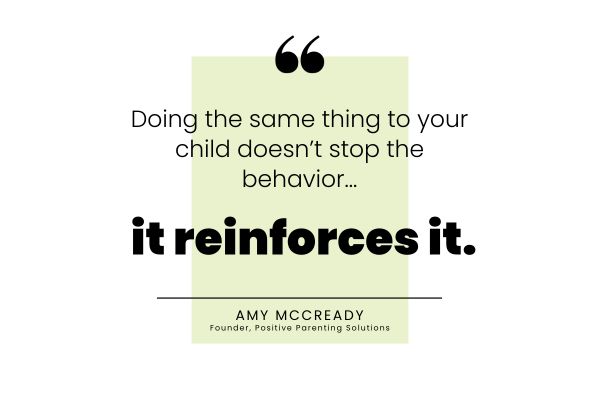
Don’t Resort to Punishment
In parenting, the line between discipline and punishment can seem blurry. To some, the two may even be used interchangeably. However, by definition, they are not synonymous.
Dr. Jane Nelsen-the mother of Positive Discipline-described punishment as anything that causes a child to feel blame, shame, or pain. It relies on using negative feelings to end negative behavior, which doesn’t work.
Discipline does quite the opposite. Instead of focusing on blaming, shaming, or hurting a child to teach a lesson, discipline trains them in the ways they should act. To help yourself shift from a punishment-focused mindset to a disciplinary one, try focusing on creating a teachable moment.
Suppose your toddler bit her brother when he refused to share his after-school snack. In what ways can you use this experience to teach her a better way to handle her emotions and negative feelings? What positive parenting techniques would be best to employ?
Changing your mindset from punishment to training will take you far!
Don’t Label
If you’re like most parents, labeling your child comes as second nature to you.
He’s just such a good baby. She’s the most loving little girl on the planet! My 2-year-old can count to 100–he’s such a genius!
And while this is mainly done with nothing but a loving heart, it’s equally easy for parents to label their children negatively.
I swear, she’s so sassy! He’s always being so naughty. She’s going to be such a wild child!
Children are complex individuals facing the same life challenges adults do…without the life experience to back it up. And just as you are more than a parent, teacher, spouse, etc., your toddler cannot be shoved into a singular, neatly defined box.
Discouragement abounds when we attach negative labels to our children. These labels also invite judgment and criticism from others, leaving your child at an unfair disadvantage.
Will the “biter” be invited to the next group play date? Will the “naughty kid” receive less empathy or understanding from his peers and caretakers? In short, labels perpetuate unfair stereotypes that can be hard to overcome and limit the positive connections kids can make with others.
Don’t Worry About the Opinions of Others
One of the most challenging things to overcome–for people of all ages–is concern over the opinions of others. But bringing that concern into the parenting realm adds a whole new level of chaos to the mix.
While desiring to protect your public image is natural, an unhealthy obsession with what others think of you can do incredible damage to your mental health when left unchecked. And the last thing your already emotional and stressed child needs is an emotional and stressed parent.
Now, I get it; being known as “the biter’s mom” or “the hitter’s dad” is mortifying, especially after a public incident. But try not to allow yourself to be phased by the opinions of others or worry about what they may think or say.
Instead, keep your focus firmly rooted on your child.
Not only is it incredibly liberating to let go of your worry over other peoples’ opinions of you and your child, but this will also enable you to grow solid, positive relationships that will help your parenting, not hinder it.
Don’t Force Them To Apologize
For parents, it’s almost second nature to immediately request an apology whenever our kids do something terrible to another. We want to teach them manners and rules for polite living, and this seems like the only way to do so.
But the thing is, a forced apology isn’t a genuine apology, especially for toddlers.
Kids this young lack an understanding of their actions’ consequences on other people. A forced apology will likely be ineffective in ending the misbehavior in the future.
Now, that’s not to say that apologies aren’t necessary. Research shows that children who sincerely apologize after a transgression build more trust with the person they hurt than those who do not apologize.
The key is ensuring that the apology is genuine, and that is learned through empathy.
True apologies involve deeper understanding and the ability to see from another person’s perspective. This is a learned trait and does not come naturally to toddlers. That’s where you come in!
Using simple, considerate language helps your child understand how their actions impacted the other person.
It hurt Emily when you hit her. Can you remember a time when someone hit you? How did that make you feel?
Forcing an apology doesn’t teach empathy. But it can lead to feelings of resentment, shame, and judgment.
Now that we’ve talked about what you shouldn’t do when it comes to your toddler’s hitting or biting, let’s discuss what you should do.
Do Remain Calm & Calm Your Child
Seeing or learning about your toddler hurting another person may elicit some pretty intense emotions. Embarrassment, shock, anger, hurt…all are normal but do little to help you remain calm.
Of course, a calm state is exactly where you want to be.
Maintaining your composure models proper emotional regulation for your little one and gives you time to address the problem from a less emotionally charged state. Not to mention, raising your voice is scary for a child and only escalates an already intense situation.
If you’re worried about more aggression happening, gently hold your child to prevent him from doing so again. You can check on the other child to ensure they aren’t injured, then calmly remove your toddler from the situation.
Do Take Time for Training
Once everyone is calm, take time for training by teaching your child various calming techniques. You can work on belly breathing, sing a song together, or simply give them a huge hug to let them know you’re there and they’re safe.
Education is your number one priority here. Teaching your child how to work through those big emotions without lashing out starts with you modeling the correct behavior.
Of course, training time isn’t just for emotional regulation (though that’s definitely important!). You can stay one step ahead of any possible triggers for power struggles, meltdowns, and aggression simply by preparing your child to handle those conflicts ahead of time.
Here are a few resources we believe will be helpful to you!
- What to Do When You Feel Like Hitting: A No Hitting Book for Toddlers by Cara Goodwin and Katie Turner
- Gentle Hands and Other Sing-Along Songs for Social-Emotional Learning by Amadee Ricketts and Ashley Barron
- Teeth Are Not For Biting (Best Behavior Series Board Book)
- Hands Are Not For Hitting (Best Behavior Board Book)
- My Feet Are For Running. I Do Not Kick!: An Affirmation-Themed Book About Not Kicking (Ages 2-4) (My Amazing Toddler Behavioral Series)
- No Biting! By Karen Katz
Do Empathize & Explain Boundaries
More often than not, biting and hitting are not random occurrences but result from a surplus of big emotions. Empathize with your toddler to help them identify their overwhelming emotions.
You might say, “Wow, you look angry/frustrated/mad/upset. But it’s not okay to hit/bite when you are mad.” Then, actively listen to what they say, even if it’s not in words. More often than not, body language and tone can tell us far more than anything else.
Next, reflect their emotions back to them by saying, “I see you’re really upset right now, and it’s okay to feel that way. What’s not okay is hurting others because of that feeling.”
Finally, end your conversation by explaining (in terms they can understand) your boundaries and provide them with solutions to choose from.
“You know it’s never okay to hit/bite when you’re mad. Instead, next time, try talking to a grown-up/taking a few deep breaths/walking away.”
Do Practice the Re-Do
Everyone–adults and kids alike–needs a re-do now and then.
Pro Tip: Positive Parenting Solutions Members can review Step 4, Lesson 30, for more details on practicing the Re-Do Tool.
After all is said and done, in a calm moment, help your child figure out what they could do differently next time.
“Instead of hitting Zach because you wanted his truck, what could you have said to him instead?” or “Instead of biting mommy because you were frustrated, what could you have done instead?”
If your child could re-do the situation, help them figure out how to improve it. This allows them to acquire more constructive methods for managing intense emotions in the future.
(Remember to exercise patience! It will take them time to learn these new habits and skills.)
Do Practice Alternative Strategies
Let’s face it: for most toddlers, hitting and biting appear to be second nature. But conflict resolution skills? Not so much…
Yet, as parents, we often focus so strongly on teaching our kids what they did wrong that we stop short of teaching them what they could have done right. And the thing is, that’s the most crucial step!
One of the best ways to do this is to role-play with your toddler and show them how to handle certain situations!
Since you’re working with a toddler, make sure play is the focal point. Play is essential to toddler cognitive development and learning. (It’s even recognized by the United Nations High Commission for Human Rights as a birthright for all children!) So if you want a lesson to stick, make it fun!
Try arranging a pretend playdate with stuffed animals and encourage your little one to rehearse how to handle their frustration, seek assistance, or express their emotions without hitting or biting. Just remember, consistent, early practice is the key ingredient for success.
Over time, the lesson will stick, but all they’ll care about is the fun quality time they got to spend with you–which will also help decrease their misbehavior!
Final Thoughts:
You may look at your toddler and find it hard to believe they have an aggressive bone in their adorable little body, but I can assure you, there’s no better time than the early years to teach them how to work through their emotions without hurting others.
Of course, don’t worry if you feel like you’ve missed your window if you’re dealing with aggression in older kids–it’s never too late to teach these valuable life skills! Through the 7-Step Parenting Success System® course and my FREE WEBINAR, I’ve helped thousands of families with kids of all ages understand the main reasons their children act out with behaviors like hitting or biting.
Every day, more and more parents come to know what joy they can achieve in their households, and I’d love for your family to join that growing list.





